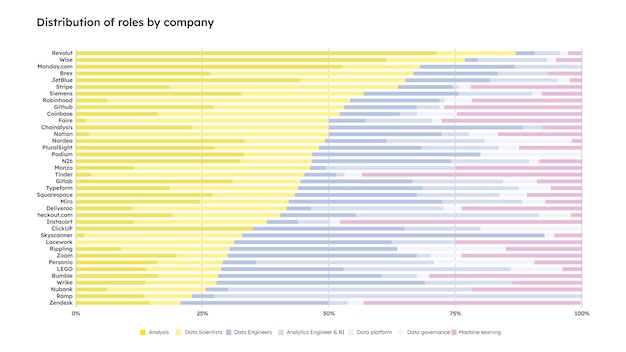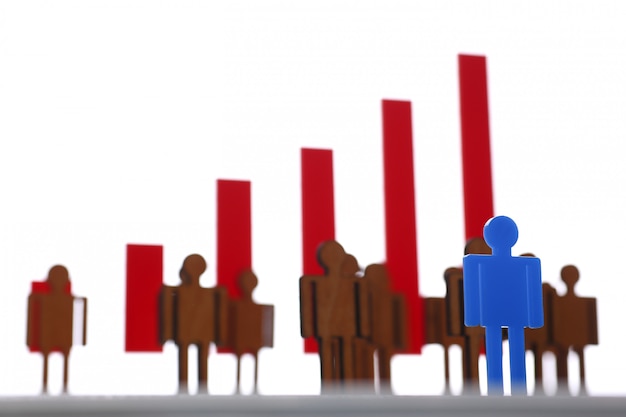Decoding the Latest US Jobs Report: Truth Behind the 3.7% Unemployment Rate

Decoding the Latest US Jobs Report: Is the Unemployment Rate of 3.7% a True Reflection of the Economy? A deep dive into the latest US jobs report examining whether the seemingly low unemployment rate of 3.7% truly represents the economic landscape, considering factors like labor force participation, wage growth, and underemployment.
The latest US jobs report presents an unemployment rate of 3.7%, a figure that on the surface suggests a healthy economy. However, to truly understand the economic reality, one must go beyond the headline number and delve into the underlying data. Are we really seeing a full picture when decoding the latest US jobs report: is the unemployment rate of 3.7% a true reflection of the economy?
Understanding the Headline Unemployment Rate
The unemployment rate is one of the most closely watched economic indicators, offering a snapshot of the labor market’s health. But what exactly does it measure, and what are its limitations?
What the Unemployment Rate Measures
The unemployment rate represents the percentage of the labor force that is jobless and actively seeking employment. The labor force includes individuals aged 16 and older who are either employed or unemployed but actively looking for work. Those who are not working and not looking for work are not considered part of the labor force.
Limitations of the Headline Number
While the unemployment rate provides valuable information, it is not a comprehensive measure of the labor market’s health. It doesn’t capture the underemployed (those working part-time but wanting full-time work) or those who have given up looking for work altogether (discouraged workers). Furthermore, it can be influenced by factors such as demographic shifts and changing workforce participation rates.
- Doesn’t account for underemployment.
- Excludes discouraged workers.
- Affected by demographic shifts.
- May obscure pockets of regional or industry-specific weakness.
Therefore, while a 3.7% unemployment rate might seem positive, a more nuanced analysis is required to fully understand the situation.
Labor Force Participation Rate: A Key Indicator
The labor force participation rate (LFPR) is another crucial metric to consider when interpreting the jobs report. It represents the percentage of the civilian non-institutional population aged 16 and older that is in the labor force.
What is Labor Force Participation Rate?
The LFPR provides insight into the proportion of the population actively engaged in the labor market, either working or seeking work. A higher LFPR generally indicates a healthier economy, as more people are willing and able to participate in the workforce.
Recent Trends and Implications
Recent trends in the LFPR can reveal important information about the underlying dynamics of the labor market. For example, a declining LFPR might suggest that more people are retiring, becoming discouraged and dropping out of the labor force, or choosing to pursue education or other activities outside of work.

Analyzing the LFPR in conjunction with the unemployment rate can provide a more complete picture of the labor market’s health. A low unemployment rate coupled with a low LFPR might indicate that the economy is not as strong as it appears, as many people may have simply stopped looking for work.
Wage Growth: Is It Keeping Pace with Inflation?
Wage growth is a critical indicator of economic well-being, reflecting the earning power of workers and the overall demand for labor. However, it’s essential to consider wage growth in the context of inflation to determine whether workers are truly experiencing increased purchasing power.
Nominal vs. Real Wage Growth
Nominal wage growth refers to the increase in wages before accounting for inflation, while real wage growth represents the increase in purchasing power after adjusting for inflation. If nominal wage growth is lower than the inflation rate, real wages are actually declining, meaning workers can afford less with their earnings.
The Impact of Inflation on Purchasing Power
High inflation can erode the gains from nominal wage growth, leaving workers with less disposable income. This can lead to decreased consumer spending, which can negatively impact economic growth.
- High inflation cancels out wage gains.
- Real wages stagnate or decline.
- Consumer spending decreases.
- Economic growth slows down.
Therefore, it’s crucial to analyze wage growth in conjunction with inflation to understand the true impact on workers’ financial well-being.
Underemployment: The Hidden Reality
While the unemployment rate captures those who are jobless and actively seeking work, it doesn’t account for the underemployed – individuals who are working part-time but desire full-time employment. This “hidden unemployment” can significantly distort the true picture of the labor market’s health.
Defining and Measuring Underemployment
Underemployment encompasses those who are working fewer hours than they would like, either because they cannot find full-time positions or because their employers have reduced their hours. Measuring underemployment involves tracking the number of part-time workers who would prefer full-time jobs.
The Significance of Underemployment
A high level of underemployment indicates that the labor market is not fully utilizing its potential. Underemployed workers often earn less than they would in full-time positions, leading to financial strain and reduced economic activity.
Sectors with High Underemployment
Certain sectors, such as retail, hospitality, and leisure, tend to have higher rates of underemployment due to the prevalence of part-time jobs and seasonal work. Economic downturns can also exacerbate underemployment across various industries.
By considering underemployment alongside the unemployment rate, a more accurate assessment of the labor market’s strength can be achieved.
Demographic Shifts and Their Influence
Demographic changes, such as aging populations, immigration patterns, and shifts in educational attainment, can significantly influence the labor market and the interpretation of unemployment statistics.
The Aging Workforce
As baby boomers retire, the labor force participation rate may decline, even if the economy is strong. This can lead to a lower unemployment rate, but not necessarily reflect positive economic conditions.
Immigration Patterns
Immigration can impact the labor market by increasing the supply of workers, potentially putting downward pressure on wages in certain sectors. Understanding immigration patterns is essential for interpreting labor market statistics accurately.

Demographic shifts can have far-reaching implications for the labor market, requiring policymakers and analysts to consider these factors when assessing the health of the economy.
Interpreting the Jobs Report in the Context of Broader Economic Trends
The jobs report should not be viewed in isolation but rather as one piece of a larger economic puzzle. Factors such as GDP growth, inflation, interest rates, and consumer confidence all play a role in shaping the labor market.
The Relationship Between GDP Growth and Employment
Strong GDP growth typically leads to increased demand for labor, resulting in job creation and lower unemployment rates. Conversely, slow or negative GDP growth can lead to job losses and higher unemployment.
The Role of Monetary Policy
The federal reserve’s monetary policy decisions, such as raising or lowering interest rates, can influence economic activity and the labor market. Higher interest rates can slow down economic growth, potentially leading to job losses, while lower interest rates can stimulate growth and job creation.
- GDP growth affects job demand.
- Federal Reserve impacts economic activity.
- Consumer confidence drives spending & influences job market.
- Global economic conditions can impact domestic jobs.
< The Economic Landscape Understanding Unemployment Data The Labor Force and Participation Wage Growth and Inflation Hidden Realities of Underemployment Key Factors Affecting Jobs
| Key Point | Brief Description |
|---|---|
| 📊 Unemployment Rate | Percentage of jobless, actively seeking work. |
| 🧑💼 Labor Force Participation | Percentage of the population in the labor force. |
| 💰 Wage Growth | Increase in wages, adjusted for inflation. |
| 💼 Underemployment | Part-time workers desiring full-time work. |
Frequently Asked Questions
▼
The unemployment rate measures the percentage of the labor force that is jobless and actively seeking employment. It does not include those not looking for work.
▼
The labor force participation rate indicates the proportion of the population actively engaged in the labor market, providing insights into economic health.
▼
Inflation erodes the purchasing power of wages. If inflation is higher than nominal wage growth, real wages decline, reducing affordability for workers.
▼
Underemployment refers to individuals working part-time who desire full-time work. It signifies underutilized labor potential and can lead to financial strain.
▼
Demographic changes like aging populations and immigration influence labor supply and demand, affecting wage levels and overall workforce participation rates.
Conclusion
In conclusion, while the 3.7% unemployment rate might seem encouraging on the surface, a true reflection of the economy requires a deeper understanding of various factors like labor force participation, wage growth adjusted for inflation, and underemployment trends.





